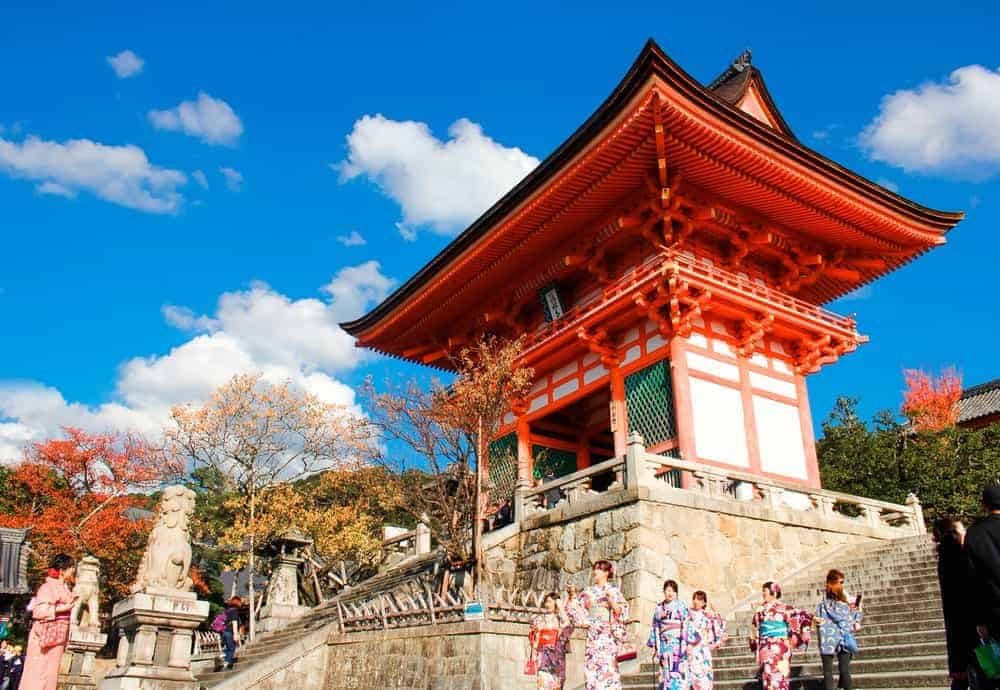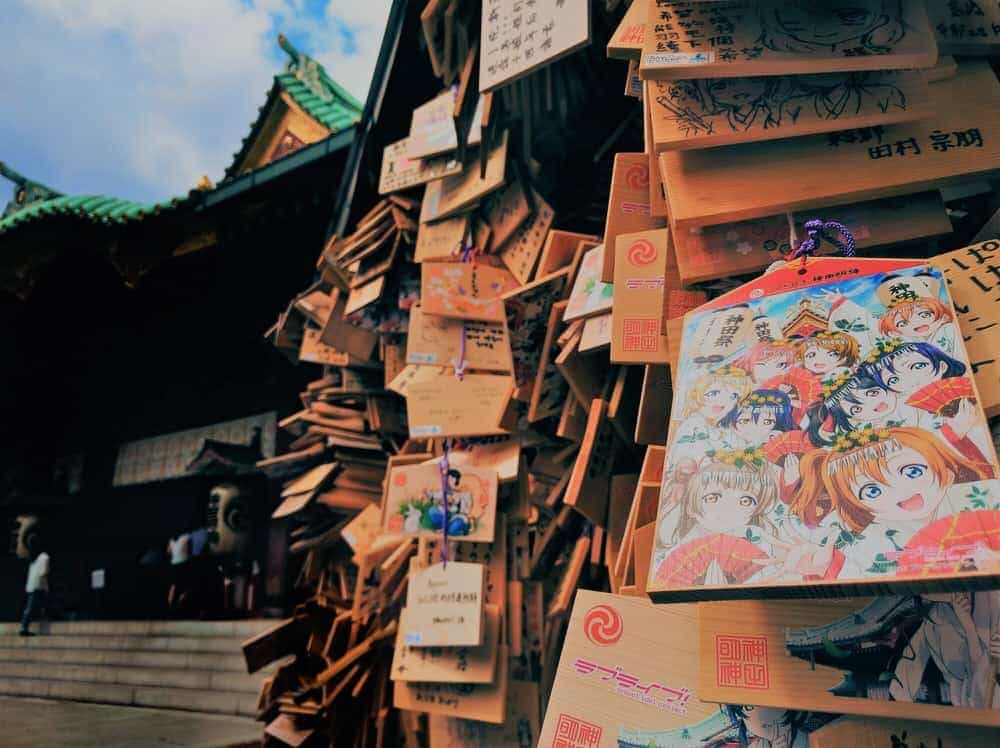Have you seen these Japanese lucky charms Omamori for the New Year and wondered what it is? Well, I’ll answer your query and tell you more about it here!
Welcome prosperity and good fortune in the New Year with our guide to Japanese Omamori, the traditional lucky charms that carry blessings and protection. These sacred talismans, steeped in Shinto and Buddhist practices, are crafted with intention and care.
Discover the various types of Omamori and their specific auspicious meanings.

Page Contents
Guide To Japanese Lucky Charms Omamori For The New Year
In Japanese “omamori” (お守り, 御守), when loosely translated means amulet. The kanji that makes the word means to guide or to protect.

Essentially, they’re beautiful, intricately designed pouches that contain little scrolls inscribed with prayer.
The Japanese lucky charms Omamori were introduced in Japan by the Buddhist culture and now can be found in Buddhist and Shinto shrines.
Regardless of what religious beliefs one practices, omamori can be bought by anyone. People consider them as the perfect souvenir and gift upon a visit.
Let’s get into the details of Japanese lucky charms Omamori if you want to have one of your own!
There Are Different Types Of Omamori
Japanese lucky charms Omamori is fiercely popular, hence the many variations and styles that it started coming in.
You’ve got everything, you name it — phone cases, key chains, stickers, car window stickers, all that feature popular characters from anime.
These can be dangled or stuck on your phones, cars, wallet or the walls of your home.
Even though all of this exists, traditionally, they were sold in only tiny little brocade pouches. I’ve seen people visit the shrines and buy an omamori without batting an eye about what it’s for because they just know what it is.
If you’re as overwhelmed and perplexed as I am, this guide to omamori for the new year or any other occasion is the perfect read for you. These days, omamori are factory-made in Japan because of the high demand.

The supply couldn’t keep you with the demand. But worry not, they are still blessed by priests before being available for sale, There still are shrines like the Koganji Temple in Tokyo that still make their own omamori.
The most common types of omamori that can be found anywhere are:
- Katsumori (勝守) – meaning success, the omamori helps you to win or succeed at something you’ve wished for a long time.
- Shiawase (幸せ) – happiness, the amulet will drive happiness in your direction.
- Kaiun (開運) – for good fortune; This talisman is for one’s general good luck.
- Yakuyoke (厄除け) – driving away evil or ill fortune, this omamori stands in the way of anything that tries to stand in the way of you achieving your goals
- Kenko (健康) – perfect for wishing for general good health
Some of the more specific omamori include:
- Shobai-hanjo (商売繁盛) – this amulet is meant for achieving success in business and aid in career growth and financial matters
- Kanai-anzen (家内安全) – helps you bring all-rounded health, well being and prosperity for everyone on your home
- Gakugyo-joju (学業成就) – popular among students, this omamori helps bring successes in studies and passing exams.
- En-musubi (縁結び) – meaning, love. When only one charm is bought, it means you want to find love. Upon buying an additional charm, you want to protect that relationship.
- Byoki-heyu (病気平癒) –literally translates into “get well soon”, want for those who are ill or are trying to recover from an illness.
- Anzan (安産) – an amulet to pray for an unproblematic and safe pregnancy period and childbirth.
- Kotsu-anzen (交通安全) – omamori for protection in the heavy traffic against travellers and drivers.
Katsumori 勝守
Katsumori charms, known as “good luck charms” are designed to bring owner luck in all areas, from success in business and academics to general happiness in life.
Shiawase 幸せ
Shiawase, or “happiness” charms, are most often used to improve relationships and bring joy to the family.
Yakuyoke 厄除け
Yakuyoke charms are believed to ward off misfortune or bad luck.
Kenko 健康
Kenko or “health” charms can be used to protect from disease and improve physical wellbeing.
Shobai-hanjo 商売繁盛
Shobai-hanjo charms, which mean “business improvement” are a popular choice used to promote success in financial matters.
Kanai-anzen (家内安全)
Kanai-anzen charms are meant to provide security in the home and office.
Gakugyo-joju (学業成就)
Gakugyo-joju charms are intended to attract academic success, while En-musubi charms are sought after for luck in relationships.
Byoki-heyu (病気平癒)
Byoki-heyu charms protect against illness and asthma, and Anzan charms are a popular choice for good fortune in examinations.
Kotsu-anzen (交通安全)
Last but not least, Kotsu-anzen charms are touted to improve overall health and happiness.
Each type of Omamori serves a different purpose and brings its own special kind of protection, making them incredibly versatile and functional. They’re the perfect way to bring a little extra luck and security into any area of your life.
There are countless types of omamori, and I can’t possibly list them all. There are some specific to shrines, there are those, the more exclusive ones, that are specific to the time of the day that they are available in the shrine.
Some of the most high-in-demand ones also have a resale value, a practice followed on the internet.
This practice, however, is disapproved of. Some priests say that this act can actually bring bad luck to both the reseller and the purchaser. So avoid doing that.
There is no “best” Japanese lucky charm omamori, technically, it all depends on the purpose you’re looking for, that part of your life that you think needs aid from a power that’s higher than you, or because who couldn’t use a little bit of luck.
Even though all shrines have their own deities and own types of Japanese lucky charms Omamori, some of the Shinto priests say that the right omamori will call out to you. You don’t need to worry about picking the wrong one.
Important Rules Of Omamori
Number one rule, don’t mistake it for a decorative tea bag. The Omamori etiquette is no joke. The guide to Japanese lucky charms Omamori is not hard to follow, but it is important.

Placement Of The Omamari Is Important Depending On The Purpose
It really is up to you, where you want to keep it, but as the purpose of the omamori differs, the location changes along with it.
For example, if you want to get pregnant, the anzan omamori will be placed under your mattress or pillow.
If you want to be protected against the technology and IT mishaps, then you keep the joho anzen omamori near your laptop or computer.
It’s Disrespectful to Open The Omamori
If you’re intrigued by the tiny pouch and you want to open the Japanese lucky charms Omamori, just don’t.
Not even a teensy little bit. Not only is it disrespectful, but you are also in all ways risking your charm losing its power.
When you open the pouch, the prayers escape its bond and the charm becomes ineffective. You’ve heard of curiosity killed the cat.
You Can Buy Multiple Japanese Charms At A Time
It all depends on how much luck you need and in how many areas of your life. If you think luck in just one area of your life will suffice, then so will just one charm.
If you need more protection, you can always buy multiple charms. You can mix and match, you don’t have much to worry about.
You can keep the ones you bought from the same shrine together, or ones from two different shrines together.
If you have other religious beliefs, you can keep it with other religious items as well, such as the star of David or the rosary.
There, however, is one cause for concern. The Buddhist and Shinto omamori, when kept together, might cancel out each other’s effects.
The interactions between the two can be worrisome, but you can always ask the shrine staff if there is anything to be worried about. After all, virtuous deities do not find a reason for conflict.
How Long Can You Keep an Omamori?
There is no defined answer here. It all depends on your belief.
Some families believe that the omamori can be passed down from generation to generation, and you never have to worry about the little charm losing its street or power to bring you luck.
If you’re worried about the damage time does and how worn out it is, that is actually a good sign.
The worn and deterred look indicates the charm is working and it does the job of protecting you well. Never wash the Japanese lucky charms Omamori, or you will wash off its effectiveness along with it.
On the flip side, some families believe that the omamori should be replaced every year. This ties in with the Japanese belief of renewal (even the structures of the shrine are built at least one in every twenty years).
In this case, the Japanese believe in replacing their Omamori every year, ideally during the time of the new year.
While you’re buying the omamori, some priests and miko (shrine maidens) actually mention the expiration date of these Japanese lucky charms.
It is usually about a year or it can last until the purpose of the charm has been fulfilled.
Omamori Is Destroyed In The Sacred Temple Fire During New Years
Once the omamori ‘expires’, they can’t just be thrown away. There is a proper way to dispose of them. The most popular time for people to dispose of their omamori is during the new year.
As people want to begin again and wash off everything bad and all the bad luck that has been with them.
The omamori are destroyed in the sacred fire in the temples with the assistance of the priests and miko. Another thing to make note of is that the omamori need to be returned to the same shrine it has been bought from.
Not doing that can seem like an insult to the deity of the shrine and in turn, they might not be too keen on helping you out in the new year.
Once you dispose of the omamori, you can buy some from the same shrine or another one of your preference.
A little pouch of magic that comes with the Omamori is sure to keep you safe, protected and successful all year long! It’s not ideal, but you don’t have to wait around for the New Year’s time to bring home an omamori you desire.





